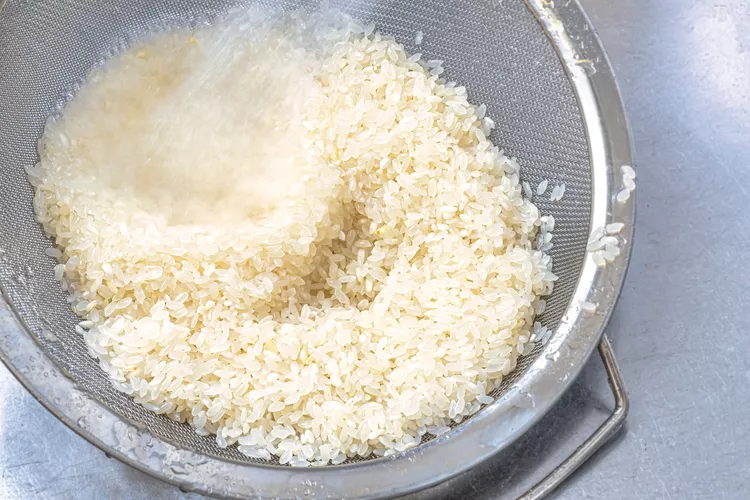How to Wash Rice Properly, According to Someone Who Eats Rice Daily

Rice has been a daily meal staple for me for 20 years now, and there's one step I don't skip when making it: I make sure to always wash it.
In South India, it’s an every day, every meal kind of food. We ferment it, fry it on pans, pull it into strings—but mostly, we boil it. No matter how we choose to eat it, though, we never forget to wash it. And now, even when I’m 9,000 miles from home, I make sure to rinse my rice, thoroughly and without any exceptions. Ethnic instinct, I would call it. But here’s the thing—you don’t have to.
Rice cleaners are pedantic and nit-picky. Non rice-cleaners are lazy. Who’s right? It depends.
The answer, in short, is that washing rice is not about hygiene. It’s not a cleanliness thing; I’m not pulling out grains from the dirt or picking it off a tree. The rice that we find at the grocery store has been cleaned, sifted, and polished long before it even touches its packaging. It’s a texture thing.
Wash your rice if you want fluffy, separate grains. Skip the extra step if you want creamy, starchy rice.
Washing rice primarily removes starch. Whether you have to wash your rice or not mainly depends on how starchy you want your dish. While washing your rice doesn’t cut down on any cooking time, it can also remove excess rice bran oil from the exterior of the grains, and with it, its unpleasant taste.
If you use a rice cooker, unwashed rice can also cause starch bubbles and gum up your cooker.
How to Wash Rice
Step 1: Measure the Rice
Start by measuring the amount of rice you need. It’s always good to keep track of the precise amount of rice you are cooking so the texture can be perfect. Place the rice in a large bowl, or as I like to do it, directly into my rice cooker’s inner pot.
Step 2: Add Water
Fill the bowl or pot with cold water, covering the rice completely. Swirl the rice gently with your hand to loosen the surface starch. The water will become cloudy as the starch is released. You can also invest in a rice washing bowl, which is designed to wash and strain the rice in the same bowl.
Step 3: Drain the Water
Carefully pour out the cloudy water, using your hand or a fine-mesh strainer to prevent the rice from escaping. Be cautious not to lose any grains during this step.
Step 4: Repeat
Repeat the process of adding water, swirling, and draining until the water runs clear. This typically takes me about 3 to 4 rinses, depending on the type of rice and how starchy it is.
Step 5: Soak (Optional)
For some rice varieties, soaking it can improve the texture and reduce cooking time. After the final rinse, you can soak the rice in clean water for 30 minutes before cooking. I’ve found this step to be particularly helpful for long-grain and short-grain rice varieties.
Rice Variations, and Whether You Should Wash Each
Long-Grain Rice
Varieties like basmati, jasmine, and other long-grain rices benefit from washing. The removal of surface starch helps achieve the light, separate grains that are ideal for dishes like pilafs and stir fries.
Medium-Grain Rice
Medium-grain rice, such as arborio and calrose, can be washed depending on the dish. For risotto, which calls for arborio rice, it's better to not wash it as the surface starch contributes to the creamy texture. The same holds true for paella or rice pudding.
Short-Grain Rice
Short-grain rice, like sushi rice, should always be washed thoroughly to remove excess starch. This ensures the rice achieves the desired sticky consistency without becoming overly gummy.
Brown Rice
While brown rice doesn't have as much surface starch as white rice, it can still benefit from a quick rinse to remove any dust or debris.
Pre-Washed or Enriched Rice
Some rice is labeled as "pre-washed" or "enriched." Pre-washed rice has already been rinsed, so washing it again is unnecessary. Enriched rice has added nutrients, which can be washed away if rinsed. Always check the packaging to determine if your rice falls into these categories.